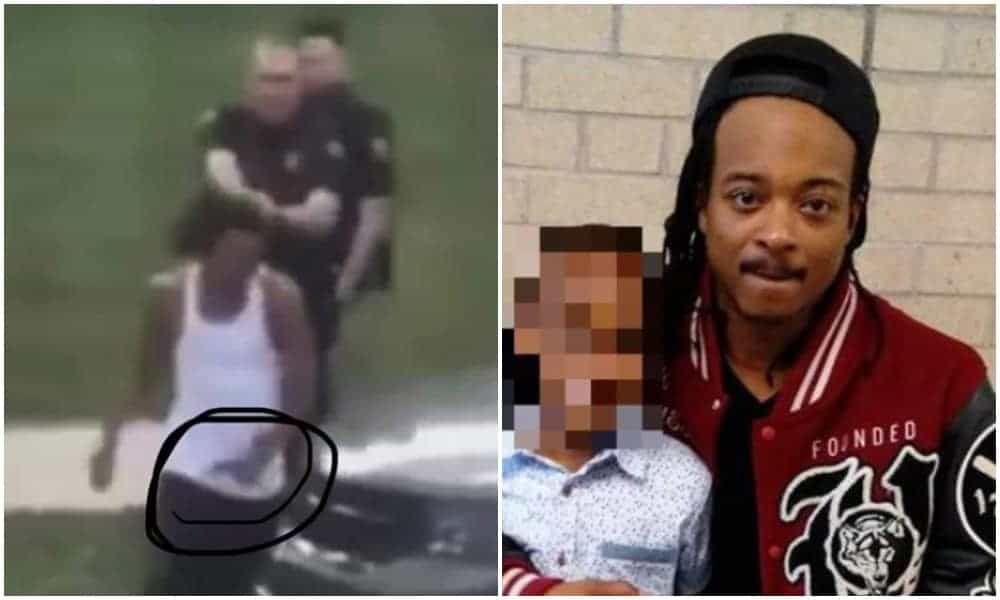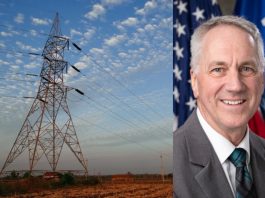A second officer also saw Blake twist toward Sheskey with a knife. “That officer said he too would have opened fire but did not have a clear angle”
The day after the Kenosha police shooting of Jacob Blake, we told you how imperative it was to wait for the facts of the shooting. The charging decision is imminent, the facts are now in, and here’s what we think.
Back in August, a day after the shooting, we asked a series of questions that needed to be answered before a judgment could be made regarding the justification of the shooting. We now know the answer to those questions based on what the police, the officer’s attorney, and the investigators have released.
They all add up to the clear conclusion that, if prosecutors are fair and not swayed by public pressure, they should NOT charge the officer.
Here’s why:
Did Blake have or have access to a weapon?
We now know that Blake did in fact have a knife. He admitted that to detectives when interviewed. The officer repeatedly ordered Blake to drop the knife, but he did not comply. “During the investigation following the initial incident, Mr. Blake admitted that he had a knife in his possession. DCI agents recovered a knife from the driver’s side floorboard of Mr. Blake’s vehicle,” a DOJ press release said.
Did the officers exhaust all other options before Officer Sheskey opened fire?
Officers went hands on with Blake, and two officers deployed their tasers. Blake continued to fight with the officers and at one point put an officer in a headlock.
Why were the officers called to the scene, and what information did they know or not know?
Officers were called to the scene due to a call from a woman who said Blake was at her home and shouldn’t be there. Officers were advised prior to their arrival that Blake had a felony arrest warrant for a domestic violence incident that included a charge of third-degree sexual assault. It is important to note that officers are required by law to take persons they encounter into custody who have active arrest warrants.
What actions or statements did Blake, victims or witnesses at the scene say or do?
Upon the arrival of Officer Rusten Sheskey, he heard a woman say, “He’s got my kid. He’s got my keys.” Sheskey told investigators he believed Blake was trying to abduct one of his own children.
According to the Chicago Sun Times, the bystander who recorded the shooting, 22-year-old Raysean White, said he saw Blake scuffling with three officers and heard them yell, “Drop the knife! Drop the knife!” before gunfire erupted.
What the officers saw and knew.
We know the responding officer did see a knife in Blake’s hand. They knew Blake had an active felony arrest warrant and that they believed he was possible kidnapping a child while armed based on the comment from the woman on the scene who said, “He’s got my kid. He’s got my keys.”
Did the officers have reason to believe a weapon was in the vehicle?
We know officers ordered him repeatedly to drop the knife.
The history of Blake and what officers knew of him.
It remains unclear what, if anything, the officers knew of Blake prior to their arrival, other than the fact he did have a felony arrest warrant for a domestic violence that included a charge of third-degree sexual assault.
Was anyone else in the car?
Officer Sheskey saw Blake put a child in the vehicle when he arrived on scene. Officer Sheskey didn’t know that two other children were also in the back seat. Officers have an obligation not to let a man with access to a weapon who was wanted on a felony warrant leave the scene with a child. How do we want an officer to react if he believes a child is being kidnapped at knife point? If he let him drive away and something happened to the child, what would society say then? That officer had no choice.
Was Blake, as Governor Evers said, shot “in the back”?
Blake was shot in the back multiple times. However, Blake “held a knife in his hand and twisted his body toward” the officer, and he didn’t stop until he determined Blake “no longer posed an imminent threat.” Officers are trained to use deadly force until they determine the threat is over. Sheskey’s attorney told CNN a second officer also saw Blake twist toward Sheskey with a knife. “That officer said he too would have opened fire but did not have a clear angle,” the lawyer told CNN.
Our Decision
Under Wisconsin law, “A person may employ deadly force against another, if the person reasonably believes that force is necessary to protect a 3rd-person or one’s self from imminent death or great bodily harm.”
Wisconsin law enforcement officers are trained that deadly force may be used, after all other reasonable means of capture are exhausted, to effect the arrest or prevent the escape of a suspect whom the officer has reasonable cause to believe has committed or attempted to commit a felony involving the use or threatened use of deadly force, and the officer reasonably believes the suspect cannot be apprehended later without the use of deadly force; and provided further, that the lives of innocent persons may be endangered if the officer does not use deadly force.
Due the the now known facts of the case, Wisconsin state law and law enforcement training standards, it is our firm belief that Officer Rusten Sheskey reasonably believed that Jacob Blake posed a risk of death or great bodily harm to himself, other officers on scene and the child in the car. Officers exhausted all other methods of stopping Blake from continuing with his actions and that Sheskey had no other option than to use deadly force.
If the prosecutor acts fairly, we would expect the shooting to be ruled justified, and Sheskey to not be charged. However, prosecutors’ actions are questionable so far. Why did the district attorney and attorney general need to punt the decision and instead dump it on a former Black police chief “consultant”? Isn’t that what we’re paying them for? To make the hard decisions? Why did they wait months when the DA made a charging decision in the Kyle Rittenhouse case immediately?
The public and prosecutors have the luxury of taking months to pore over the facts and make a decision on whether force was justified. The officer had seconds, if that.
We also wish to point out, once again, how important it is to wait for the facts of a case before jumping to conclusions. We blame Gov. Evers for his rush to judgment, which aggravated an already volatile situation. Emotional responses without facts cause so much pain and misery. In this case, Kenosha burned, two men died, and a 17 year old from Illinois is fighting homicide charges. The decision of one person to fight the cops led to so much devastation.
Table of Contents

![WATCH: Elon Musk Town Hall Rally in Green Bay [FULL Video]](https://www.wisconsinrightnow.com/wp-content/uploads/2022/04/Elon_Musk_3018710552-265x198.jpg)

![The Great American Company [Up Against the Wall]](https://www.wisconsinrightnow.com/wp-content/uploads/2025/03/MixCollage-29-Mar-2025-09-08-PM-4504-265x198.jpg)
![The Wisconsin DOJ’s ‘Unlawful’ Lawman [WRN Voices] josh kaul](https://www.wisconsinrightnow.com/wp-content/uploads/2025/03/MixCollage-29-Mar-2025-08-48-PM-2468-265x198.jpg)

![Judges vs. Trump [Up Against the Wall] Frederick Walls Trump Holds Cash Special Counsel Jack Smith Iowa Victory for Trump Remove Trump From Primary Ballot](https://www.wisconsinrightnow.com/wp-content/uploads/2023/11/trump-case-dismissed-265x198.jpg)
![The Fed Reverses Course [Up Against the Wall] the fed](https://www.wisconsinrightnow.com/wp-content/uploads/2023/07/Collage-Maker-20-Jul-2023-08-12-AM-729-265x198.jpg)
![Phil Gramm’s Letter to Wall Street Journal [Up Against the Wall]](https://www.wisconsinrightnow.com/wp-content/uploads/2025/03/gramm-265x198.png)


![America Is Back! [Up Against the Wall] Reduces $464M Bond Leaked Trump's Taxes Michaela Murphy Shenna Bellows Kicking Trump Off 2024 Ballot Fake Electors Lawsuit Classified Documents Trial Donald Trump Poll Documents Trial Trump’s Poll Numbers Spike After Indictment](https://www.wisconsinrightnow.com/wp-content/uploads/2022/08/trump-raid-265x198.jpg)
